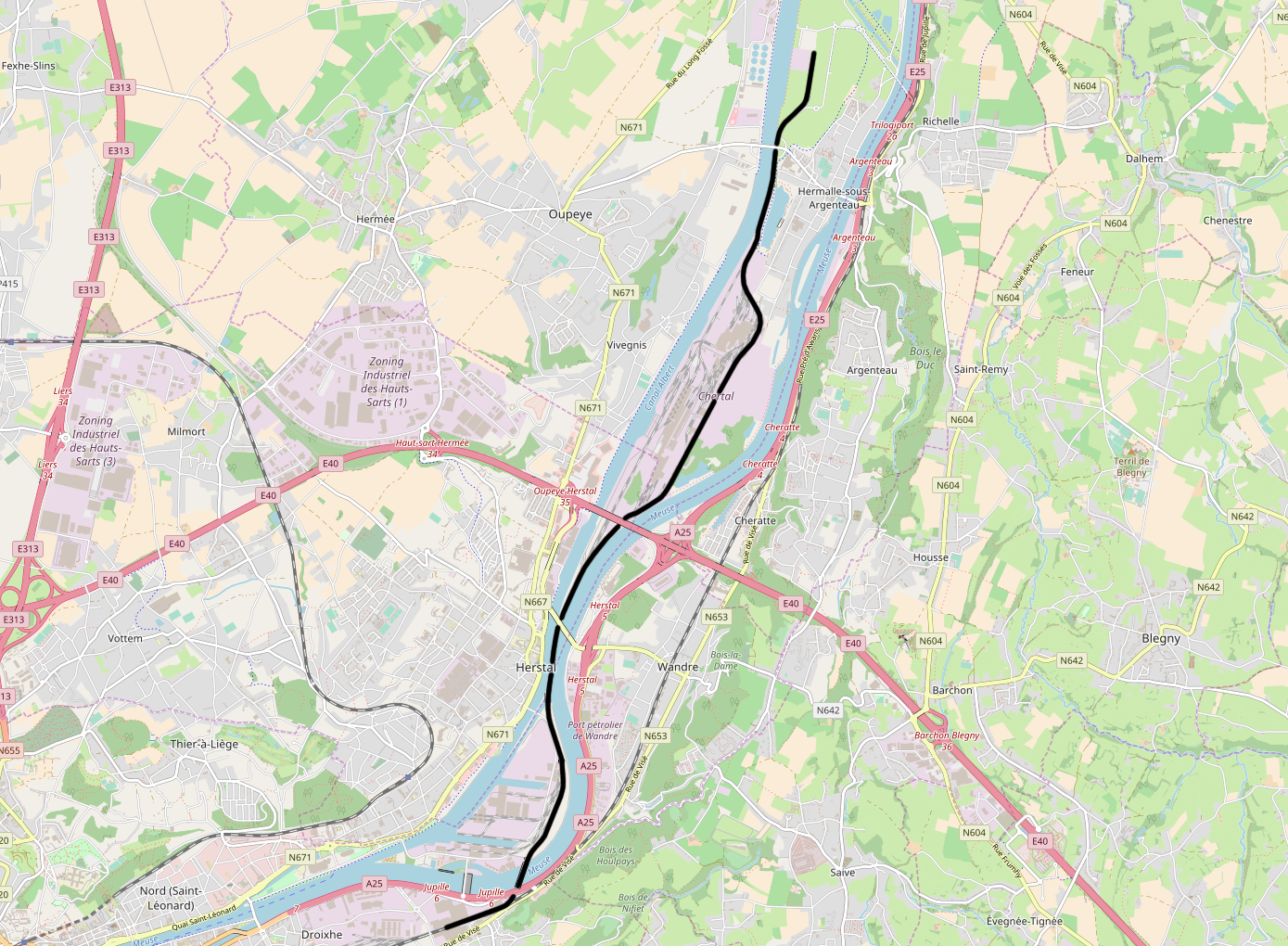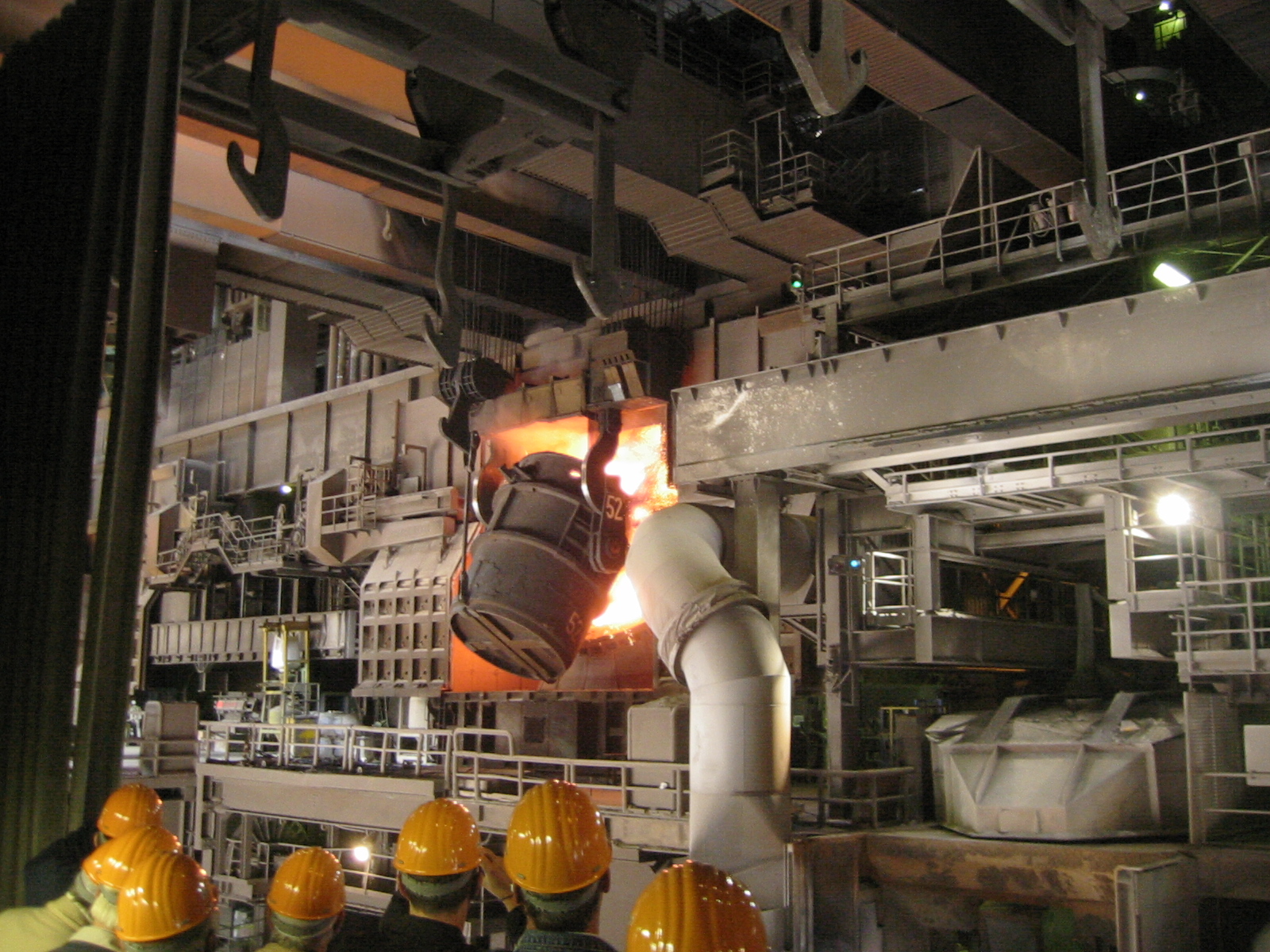|
Espérance-Longdoz
Espérance-Longdoz was a coal mining and steel production company located in the Liège region of Belgium. The company merged with Cockerill-Ougrée-Providence in 1970 to form Cockerill-Ougrée-Providence-Espérance Longdoz (known as Cockerill), later being merged into Usinor, then Arcelor then ArcelorMittal. Production at Longdoz ceased in the latter part of the 20th century, the factory site was redevelopend in the 2000s into a shopping complex ''Médiacité'', one part of the buildings at Longdoz has been preserved and is now the home of an industrial museum ''La Maison de la Métallurgie et de l'Industrie de Liège''. A later steelworks development, built at Chertal in the 1960s is still in operation (as of 2010) and is part of the ArcelorMittal group, within the Liège division. History In 1845/6 the Dothée brothers established a tinplate factory in Longdoz in Liège Province, then in 1862/3 the Dothée brothers merged their business with the ''Société anonyme des Hau ... [...More Info...] [...Related Items...] OR: [Wikipedia] [Google] [Baidu] |
Allegheny-Longdoz
ALZ (''Allegheny-Longdoz'') is a stainless steel producer based in Genk in Limburg province, Flanders, Belgium. In 2001 the company was merged with French stainless steel producer ''Ugine'' and in 2006 became part of the ArcelorMittal group as part of the stainless steel division. History ALZ was founded as a vertically integrated stainless steel producer in 1960 as an equal holding between Espérance-Longdoz (Belgium) (controlled by ''Evence Coppée'') and Allegheny Ludlum (USA).The Belgian economy in the twentieth century, p.171 In 1970 Espérance-Longdoz (''Société Métallurgique d'Espérance Longdoz'') became part of Cockerill-Ougrée-Providence, and ALZ became a Cockerill subsidiary; Allegheny Ludlum disposed of its shares, and in 1971 Cockerill had a 90% stake of the shares. In 1979/80 the Cockerill group was restructure due to financial problems, and also disposed of its shares; German steel company Klöckner became a shareholder, in 1981 the other Flanders-based stee ... [...More Info...] [...Related Items...] OR: [Wikipedia] [Google] [Baidu] |
Chertal
Oupeye (; wa, Oûpêye) is a municipality of Wallonia located in the province of liège, Belgium. On January 1, 2006, Oupeye had a total population of 23,581. The total area is 36.11 km² which gives a population density of 653 inhabitants per km². The municipality consists of the following districts: Haccourt, Hermalle-sous-Argenteau, Hermée, Heure-le-Romain, Houtain-Saint-Siméon, Oupeye, and Vivegnis. Chertal Chertal is a narrow isthmus approximately 1.5 km southeast of Oupeye bounded by the Albert Canal and Meuse. Since 1963 the land has been the site of a steel factory founded by Espérance-Longdoz (as of 2010 part of ArcelorMittal Liège). See also * List of protected heritage sites in Oupeye This table shows an overview of the protected heritage sites in the Walloon town Oupeye. This list is part of Belgium's national heritage. See also * List of protected heritage sites in Liège (province) This table shows an o ... Oupeye Cha ... [...More Info...] [...Related Items...] OR: [Wikipedia] [Google] [Baidu] |
Linz-Donawitz Process
Basic oxygen steelmaking (BOS, BOP, BOF, or OSM), also known as Linz-Donawitz steelmaking or the oxygen converter processBrock and Elzinga, p. 50. is a method of primary steelmaking in which carbon-rich molten pig iron is made into steel. Blowing oxygen through molten pig iron lowers the carbon content of the alloy and changes it into low-carbon steel. The process is known as ''basic'' because fluxes of burnt lime or dolomite, which are chemical '' bases'', are added to promote the removal of impurities and protect the lining of the converter. The process was invented in 1948 by Swiss engineer Robert Durrer and commercialized in 1952–1953 by the Austrian steelmaking company VOEST and ÖAMG. The LD converter, named after the Austrian towns Linz and Donawitz (a district of Leoben) is a refined version of the Bessemer converter where blowing of air is replaced with blowing oxygen. It reduced capital cost of the plants and smelting time, and increased labor productivity. Between ... [...More Info...] [...Related Items...] OR: [Wikipedia] [Google] [Baidu] |
Defunct Companies Of Belgium
{{Disambiguation ...
Defunct (no longer in use or active) may refer to: * ''Defunct'' (video game), 2014 * Zombie process or defunct process, in Unix-like operating systems See also * * :Former entities * End-of-life product * Obsolescence Obsolescence is the state of being which occurs when an object, service, or practice is no longer maintained or required even though it may still be in good working order. It usually happens when something that is more efficient or less risky r ... [...More Info...] [...Related Items...] OR: [Wikipedia] [Google] [Baidu] |
Continuous Casting
Continuous casting, also called strand casting, is the process whereby molten metal is solidified into a "semifinished" billet, bloom, or slab for subsequent rolling in the finishing mills. Prior to the introduction of continuous casting in the 1950s, steel was poured into stationary molds to form ingots. Since then, "continuous casting" has evolved to achieve improved yield, quality, productivity and cost efficiency. It allows lower-cost production of metal sections with better quality, due to the inherently lower costs of continuous, standardised production of a product, as well as providing increased control over the process through automation. This process is used most frequently to cast steel (in terms of tonnage cast). Aluminium and copper are also continuously cast. Sir Henry Bessemer, of Bessemer converter fame, received a patent in 1857 for casting metal between two counter-rotating rollers. The basic outline of this system has recently been implemented today in the ... [...More Info...] [...Related Items...] OR: [Wikipedia] [Google] [Baidu] |
RTL Group
RTL Group (for "Radio Television Luxembourg") is a Luxembourg-based international media conglomerate, with another corporate centre in Cologne, Germany. The company operates 68 television channels and 31 radio stations in Germany, France and other European countries. It also offers national streaming platforms, content productions and a range of digital services. Important segments of RTL Group are RTL Deutschland, Groupe M6, Fremantle and RTL Nederland. The company, in its present form, was established by Bertelsmann, Groupe Bruxelles Lambert (GBL) and Pearson in the year 2000. Over the years, Bertelsmann, a conglomerate based in the German city of Gütersloh, continued to increase its stake in RTL Group and currently owns just over 75% of the shares in the company after holding a stake of more than 90% in the past. RTL Group is one of a total of eight divisions of Bertelsmann: It is responsible for more than a third of its revenue and a large share of its operating profit. ... [...More Info...] [...Related Items...] OR: [Wikipedia] [Google] [Baidu] |
Financial Crisis Of 2007–2010
Finance is the study and discipline of money, currency and capital assets. It is related to, but not synonymous with economics, the study of production, distribution, and consumption of money, assets, goods and services (the discipline of financial economics bridges the two). Finance activities take place in financial systems at various scopes, thus the field can be roughly divided into personal, corporate, and public finance. In a financial system, assets are bought, sold, or traded as financial instruments, such as currencies, loans, bonds, shares, stocks, options, futures, etc. Assets can also be banked, invested, and insured to maximize value and minimize loss. In practice, risks are always present in any financial action and entities. A broad range of subfields within finance exist due to its wide scope. Asset, money, risk and investment management aim to maximize value and minimize volatility. Financial analysis is viability, stability, and profitability asse ... [...More Info...] [...Related Items...] OR: [Wikipedia] [Google] [Baidu] |
Belgian Railway Line 214
{{Disambiguation ...
Belgian may refer to: * Something of, or related to, Belgium * Belgians, people from Belgium or of Belgian descent * Languages of Belgium, languages spoken in Belgium, such as Dutch, French, and German *Ancient Belgian language, an extinct language formerly spoken in Gallia Belgica *Belgian Dutch or Flemish, a variant of Dutch *Belgian French, a variant of French *Belgian horse (other), various breeds of horse *Belgian waffle, in culinary contexts * SS ''Belgian'', a cargo ship in service with F Leyland & Co Ltd from 1919 to 1934 *''The Belgian'', a 1917 American silent film See also * *Belgica (other) *Belgic (other) Belgic may refer to: * an adjective referring to the Belgae, an ancient confederation of tribes * a rarer adjective referring to the Low Countries or to Belgium * , several ships with the name * Belgic ware, a type of pottery * Belgic Confession, a ... [...More Info...] [...Related Items...] OR: [Wikipedia] [Google] [Baidu] |
Tabulating Machine
The tabulating machine was an electromechanical machine designed to assist in summarizing information stored on punched cards. Invented by Herman Hollerith, the machine was developed to help process data for the 1890 U.S. Census. Later models were widely used for business applications such as accounting and inventory control. It spawned a class of machines, known as unit record equipment, and the data processing industry. The term "Super Computing" was used by the ''New York World'' newspaper in 1931 to refer to a large custom-built tabulator that IBM made for Columbia University. 1890 census The 1880 census had taken eight years to process. Since the U.S. Constitution mandates a census every ten years to apportion both congressional representatives and direct taxes among the states, a combination of larger staff and faster-recording systems was required. In the late 1880s Herman Hollerith, inspired by conductors using holes punched in different positions on a railway ... [...More Info...] [...Related Items...] OR: [Wikipedia] [Google] [Baidu] |
Herman Hollerith
Herman Hollerith (February 29, 1860 – November 17, 1929) was a German-American statistician, inventor, and businessman who developed an electromechanical tabulating machine The tabulating machine was an electromechanical machine designed to assist in summarizing information stored on punched cards. Invented by Herman Hollerith, the machine was developed to help process data for the 1890 U.S. Census. Later models w ... for punched cards to assist in summarizing information and, later, in accounting. His invention of the punched card tabulating machine, patented in 1884, marks the beginning of the era of mechanized binary code and semiautomatic data processing systems, and his concept dominated that landscape for nearly a century. Hollerith founded a company that was amalgamated in 1911 with several other companies to form the Computing-Tabulating-Recording Company. In 1924, the company was renamed "International Business Machines" (IBM) and became one of the largest and mos ... [...More Info...] [...Related Items...] OR: [Wikipedia] [Google] [Baidu] |
Zénobe Gramme
Zénobe Théophile Gramme (4 April 1826 – 20 January 1901) was a Belgian electrical engineer. He was born at Jehay-Bodegnée on 4 April 1826, the sixth child of Mathieu-Joseph Gramme, and died at Bois-Colombes on 20 January 1901. He invented the Gramme machine, a type of direct current dynamo capable of generating smoother (less AC) and much higher voltages than the dynamos known to that point. Career Gramme was poorly educated and semi-literate throughout his life. His talent was in handicraft and when he left school he became a joiner. After moving to Paris he took a job as a model maker at a company that manufactured electrical equipment and there became interested in technology. Having built an improved dynamo, Gramme, in association with Hippolyte Fontaine, opened a factory to develop the device. The business, called Société des Machines Magnéto-Électriques Gramme, manufactured the Gramme dynamo, Gramme ring, Gramme armature and other devices. In 1873 a Gramme dynam ... [...More Info...] [...Related Items...] OR: [Wikipedia] [Google] [Baidu] |


